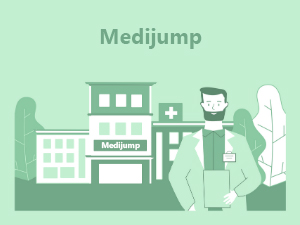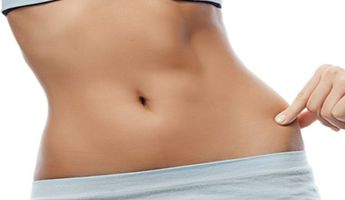Waist Liposuction in Metro Manila
Find the best clinics for Waist Liposuction in Metro Manila
No pricing info available
Egypt offers the best prices Worldwide
Price: $ 31
WHY US?
At Medijump, we're making medical easy. You can search, compare, discuss, and book your medical all in one place. We open the door to the best medical providers worldwide, saving you time and energy along the way, and it's all for FREE, no hidden fees, and no price markups guaranteed. So what are you waiting for?

Free

Best Price

Widest Selection

Risk-Free
Waist liposuction is a cosmetic procedure that breaks up and “sucks” fat from the waist. The waist and flanks, often called “love handles,” is one of the most common places of weight gain and localized fat. Even after a proper diet and regular exercise, it can be difficult to slim down and achieve visible improvement in this area. This is where waist liposuction help as the procedure can deliver dramatic results.
Both men and women can undergo waist liposuction, but the procedure is more sought-after by women since it is very common for them to have fullness through the waist, particularly after having children but also as they get older. Excess fat around the waist and flanks can often cause the dreaded muffin top. The problem may also create a bra bulge (fat under the bra strap area), which can be unsightly on women. These problems can make some people feel unconfident, especially when wearing certain clothing types, like bathing suits. Excess fat in the area may also make it hard for some people to find clothes that fit perfectly.
Waist liposuction can address these problems easily. It can dramatically improve the appearance of your waist, reducing your waist measurement by a few centimeters, and, for women, decrease the rolls beneath your bra straps. As a result, you will be left with a much more youthful contour, which will ultimately enhance your self-image. For women, waist liposuction can also provide an hourglass figure, which is often considered a stamp of femininity, while men who undergo this procedure can enjoy a more athletic and toned appearance.
Waist liposuction is often combined with hip liposuction for a more balanced result. Excess fat in the waist and hips can cause the torso to appear “square.” For many women, having smooth and shapely hips is essential to maintain a feminine silhouette. Removing fat from the waist and hip, along with the area above the buttocks, will make your body look more feminine and youthful. It can help create a better back arch and transition from the buttocks to the back as well.
Not everyone can undergo waist liposuction. A good candidate for the procedure is as follows:
- You are struggling with fat deposits in your waist that won’t go away even after exercise and diet, resulting in a muffin-top and love handle over your pants.
- You are physically and psychologically healthy, and it is preferable that you are a non-smoker. If you have a weakened immune system, coronary artery disease, or diabetes, you may not be allowed to undergo this procedure.
- You have a good skin tone and elasticity to ensure that your skin can mold itself into your new shape following the procedure.
- You have hit your target weight. While there is no specific weight you need to achieve before getting waist liposuction, you should still be within or near your target weight to be able to undergo the procedure.
- You have realistic expectations. While the procedure can help you lose several centimeters off your waist, it is important to remember that waist liposuction is not a substitute for diet and exercise and that it is not a weight-loss procedure.
The Procedure
Before your waist liposuction, you will have an initial consultation with your surgeon. This consultation may be done virtually or in person. During the consultation, you and your surgeon will discuss your expectations, concerns, and medical history, as well as the benefit and risks of the surgery. Your surgeon may also give you instructions to prepare yourself before the surgery. These may include:
- Stop smoking cigarettes. The nicotine in cigarettes can sabotage the results of your waist liposuction. It decreases the blood flow throughout your body by restricting your blood vessels. This will make your healing time longer and even increase your risk of developing a blood clot.
- Avoid alcohol since it can thin your blood, raising your risk of uncontrolled bleeding. It may also interfere with normal anesthetic metabolism.
- Eat healthy to gear up your body for waist liposuction. Eating a healthy diet can boost your health for better healing and increase your skin elasticity.
- Stop taking certain medicines and herbal supplements, such as anticoagulants and NSAIDs, since they can increase your risk of bleeding. You may also need to stop taking contraceptive pills.
If the consultation is done before you fly to Metro Manila, your surgeon and medical team may also give you suggestions about what to bring. It is usually recommended that you bring comfortable clothes, arrange for help while you recover in the hotel, and bring entertainment, such as books and movies. Your surgeon may require you to take several tests as well. These tests will help your surgeon determine whether you are an ideal candidate for the procedure or not.
The day before your waist liposuction, you may have a pre-operative appointment to review the surgical plan, discuss the post-operative instructions, and sign consent forms. Your surgeon may also take photos of your waist during this consultation for the before and after pictures.
On the day of the surgery, your surgeon will start the procedure by marking the targeted areas of your waist. Then, you will be given anesthesia. Waist liposuction can be performed under local or general anesthesia. Local anesthesia only numbs the treatment area, but you will still be awake, while general anesthesia will put you in a temporary sleep.
There are several liposuction techniques that can be used to perform waist liposuction, but the most common technique is tumescent liposuction. With this technique, your surgeon will first pump a saline solution with lidocaine (local anesthetic) and epinephrine (vessel-constrictor) below the skin in the targeted area. This solution is used to fill the fatty layer of your skin, causing it to swell and firm so your surgeon can have better control when shaping your waist. This solution also temporarily shrinks your blood vessels, reducing blood loss during the procedure and reducing swelling, pain, and bruising after the procedure.
After injecting the solution, your surgeon will create a tiny incision in the skin of your waist. Then, a cannula will be inserted through this incision into the fatty layer. A cannula is a small tube that is connected to a vacuum-like device. The fat from your waist is sucked through the cannula into a sterile collection system using back and forth movements. The amount of fat removed depends on your condition and desire. A maximum of five liters of fat can be removed during this procedure. Once your surgeon finishes contouring your waist, they will place a compression garment on the area to help the skin heal and contract.
Waist liposuction typically takes around 1 to 1.5 hours to perform.
How Long Should You Stay in Metro Manila?
You should not have to stay in the hospital overnight unless your waist liposuction is combined with another surgery, a huge amount of fat is removed, or a general anesthetic is used. Although you can leave the hospital on the same day as your waist liposuction, you should not leave Metro Manila as soon as you are discharged. Stay at least seven days in Metro Manila for initial recovery and follow-up checkups. During the follow-up checkups, your surgeon will monitor your healing.
How Long is the Recovery Time?
Everyone is different, but you should be able to return to work within a week following your waist liposuction if your job is mostly sedentary. The incisions should heal in 3 to 4 weeks. Still, vigorous activities, such as full exercise routines and heavy lifting, should be avoided for at least six weeks.
Your initial recovery time should not be terribly painful due to the local anesthetic injected into the fatty tissue, but you will be sore and may feel some discomfort after the surgery. There will be swelling as well, which will subside in a few days.
You will see improvements within one to two weeks after your waist liposuction, but it takes at least four months for you to see the full results.
What Aftercare Should You Consider?
Post-operative instructions will be given to you by your surgeon or medical team. Make sure to follow everything. The instructions may include:
- Take short walks as soon as you can to enhance healing and increase blood flow throughout your body.
- Take medications as prescribed and directed. If your surgeon does not prescribe pain medication, ask them if you can take over-the-counter pain killers.
- Wear the compression garment for around six weeks or until your surgeon tells you to take it off. The compression garment helps reduce swelling and shape your body to its new contour.
- Stay hydrated and eat well. Remember, waist liposuction is still a surgery, which can be tough on your body. Proper healing needs good nutrition.
- Take it easy and get plenty of sleep in the first few weeks after your waist liposuction to help your body recover.
The result of your waist liposuction should be long-lasting, but you need to maintain it by making healthy lifestyle choices. Gaining or losing significant weight may change the results. Therefore, make sure you eat a proper diet and exercise regularly.
What is the Success Rate for Waist Liposuction?
Waist liposuction is considered a safe and effective procedure, especially when carried out by a board-certified plastic surgeon. However, like all surgical procedures, there are some risks you need to be aware of. These include bleeding, infection, an adverse reaction to anesthesia, severe bruising, thrombophlebitis (a blood clot forming in a vein, causing further complications like inflammation), numbness, contour irregularities, infections, pulmonary embolism, kidney or heart problems, internal organ punctures, pulmonary edema, skin burns, and allergic reactions.
To avoid these complications and achieve satisfying results, make sure you follow all of your surgeon’s instructions. Choosing a qualified and well-trained surgeon is also important.
Are there Alternatives to Waist Liposuction?
You can undergo a tummy tuck as an alternative to waist liposuction, especially if you have a lot of excess skin in the area. Along with creating a flatter tummy, a tummy tuck can smooth and give you a thinner waist. However, if you are not a good candidate for surgery or you do not want to go under the knife, CoolSculpting can be the alternative to liposuction. With CoolSculpting, a special device is used to freeze your fat cells and eliminate them from your waist. No anesthetic, incisions, or needles are used during a CoolSculpting.
What Should You Expect Before and After the Procedure?
Before waist liposuction, you may have excess fat in your waist and flanks, which may create the dreaded muffin top and love handles. After the procedure, you can enjoy a slimmer, more contoured waistline. Women can appreciate their new curves, which makes them look a lot more feminine. Men can enjoy a more toned and athletic appearance. The results of the procedure may also boost your confidence and self-esteem. Buying new clothes will be a lot easier, and you will be able to wear your old clothes again since your pants and dress sizes may go down. Clothes will also fit much better and look more flattering.
Whilst the information presented here has been accurately sourced and verified by a medical professional for its accuracy, it is still advised to consult with your doctor before pursuing a medical treatment at one of the listed medical providers
No Time?
Tell us what you're looking for and we'll reachout to the top clinics all at once
Enquire Now

Similar Procedures in Metro Manila
Prices Start From $120

Prices Start From $31

Prices Start From $120

Prices Start From $120

Prices Start From $120

Prices Start From $120

Prices Start From $120

Popular Procedures in Metro Manila
Prices Start From $111

Prices Start From $236

Recommended Medical Centers in Metro Manila for Waist Liposuction

- Interpreter services
- Translation service
- Religious facilities
- Medical records transfer
- Medical travel insurance
- Health insurance coordination
- TV in the room
- Safe in the room
- Phone in the room
- Private rooms for patients available

- Interpreter services
- Translation service
- Religious facilities
- Medical records transfer
- Medical travel insurance
- Health insurance coordination
- TV in the room
- Safe in the room
- Phone in the room
- Private rooms for patients available

- Interpreter services
- Translation service
- Religious facilities
- Medical records transfer
- Medical travel insurance
- Health insurance coordination
- TV in the room
- Safe in the room
- Phone in the room
- Private rooms for patients available

- Interpreter services
- Translation service
- Religious facilities
- Medical records transfer
- Medical travel insurance
- Health insurance coordination
- TV in the room
- Safe in the room
- Phone in the room
- Private rooms for patients available

- Interpreter services
- Translation service
- Religious facilities
- Medical records transfer
- Medical travel insurance
- Health insurance coordination
- TV in the room
- Safe in the room
- Phone in the room
- Private rooms for patients available

- Interpreter services
- Translation service
- Religious facilities
- Medical records transfer
- Medical travel insurance
- Health insurance coordination
- TV in the room
- Safe in the room
- Phone in the room
- Private rooms for patients available

- Interpreter services
- Translation service
- Religious facilities
- Medical records transfer
- Medical travel insurance
- Health insurance coordination
- TV in the room
- Safe in the room
- Phone in the room
- Private rooms for patients available

- Interpreter services
- Translation service
- Religious facilities
- Medical records transfer
- Medical travel insurance
- Health insurance coordination
- TV in the room
- Safe in the room
- Phone in the room
- Private rooms for patients available

- Interpreter services
- Translation service
- Religious facilities
- Medical records transfer
- Medical travel insurance
- Health insurance coordination
- TV in the room
- Safe in the room
- Phone in the room
- Private rooms for patients available

- Interpreter services
- Translation service
- Religious facilities
- Medical records transfer
- Medical travel insurance
- Health insurance coordination
- TV in the room
- Safe in the room
- Phone in the room
- Private rooms for patients available
